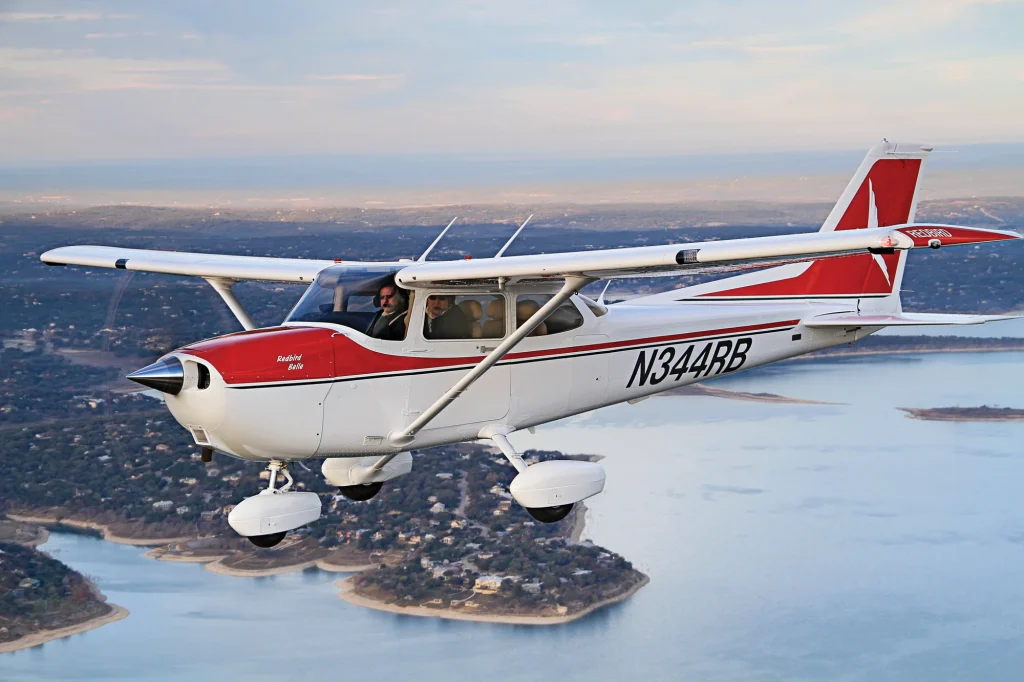Aircraft Finance Insights: Essential Documents and Liquidity Requirements
Welcome to the inaugural edition of “Clearance to Fly,” a newsletter designed to help aviation enthusiast be more educated in the aircraft acquisition and financing space. Don’t worry though, I won’t only be talking numbers and interest rates. In future editions, I will go over key takes on different makes and models, buyers guides, and even some aviation news.
I’m Keller Laseter, Chief Commercial Officer of FLYING Finance. With over a decade of aviation experience and several years in finance, I have an in-depth understanding of all categories and classes of fixed-wing aircraft. My expertise allows me to navigate clients through the financing process with ease, ensuring they feel confident and well-supported at every stage. I hold type ratings in the Beechjet 400A/XP/NXT and Embraer E-175 and have logged extensive hours in King Airs and other high-performance aircraft. Throughout my career, I’ve had the opportunity to explore many facets of aviation, gaining firsthand experience in various operations. As an ATP, CFI, and CFII, aviation isn’t just my profession, it’s my passion. I’m not your average finance guy.
On this first edition of Clearance to Fly, I do want to dive in on the financing. I’ll go over some key terms, buying power and explain the process in depth from financial institution perspective, but don’t worry, there is a lot of great information for even cash buyers. Purchasing an aircraft is a significant investment that requires careful planning and thorough documentation. Whether you’re a private individual or a business entity, understanding the necessary documents and liquidity requirements is crucial to securing financing for your aircraft acquisition. This newsletter provides an educational overview of the key documents and financial considerations involved in financing a $500,000 single-engine piston aircraft.
If you find this newsletter helpful send it to your friends. After all, it is free and they can sign up HERE!
Understanding Liquidity Requirements
Liquidity refers to your ability to meet short-term obligations without raising additional funds. In the context of aircraft financing, maintaining adequate liquidity is essential to demonstrate financial stability and the capacity to manage loan repayments. High liquidity indicates that you can easily cover short-term debts and unexpected expenses, enhancing your creditworthiness in the eyes of lenders.
Key Factors:
- Cash Reserves: Lenders typically require proof of sufficient cash reserves to cover loan repayments and operational costs.
- Loan-to-Value (LTV) Ratio: For a $500,000 aircraft, an 80% LTV ratio would involve financing $400,000, leaving you with a $100,000 down payment.
- Loan-to-Value (LTV) Ratio: For a $500,000 aircraft, an 80% LTV ratio would involve financing $400,000, leaving you with a $100,000 down payment.
- Debt Servicing Capacity: Demonstrating your ability to service total debt through consistent income streams is critical.
Benefits of Proper Documentation:
- Faster Approval: Complete and accurate documentation accelerates the loan approval process.
- Better Loan Terms: Demonstrating strong financial health and liquidity can secure more favorable interest rates and loan terms.
- Enhanced Credibility: Comprehensive financial documentation builds trust with lenders, facilitating smoother financing transactions.
Essential Personal Financial Documents:
When applying for aircraft financing, personal financial documents provide lenders with a comprehensive view of your financial health. These documents are essential to assess your creditworthiness and ability to repay the loan.
If you are a business owner, you will have a few more items to collect.
Required Personal Documents:
- Signed Personal Financial Statement: This document outlines your assets, liabilities, income, and expenses, providing a snapshot of your financial standing.
- Recent Bank Statements: Lenders require bank statements from the last three months for all accounts to verify your financial stability and liquid assets.
- Federal Tax Returns: Two years of signed federal tax returns, all pages help lenders assess your income consistency and tax compliance.
- W-2 Forms: Two years of W-2 forms verify your employment and income sources.
- Recent Pay Stub: The most recent pay stub, within 30 days. This offers a current view of your earnings.
- Identification Documents: Color copies of your driver’s license and pilot certificate are necessary to confirm your identity and qualifications or, if you have a hired pilot, their certificate will be needed.
Business Financial Documents (If a business owner/self-employed)
For business owners or self-employed individuals, additional financial documentation is required to evaluate the financial health of your business alongside your personal finances.
Required Business Documents:
- Business Tax Returns: Two years of business tax returns, all pages (2022 and 2023) provide insights into your business’s profitability and financial practices.
- Year-to-Date Financial Statements: Current financial statements, including the balance sheet and profit & loss statement, offer a real-time view of your business’s financial status.
- Debt Schedule: A detailed list of all business debts, including outstanding balances and monthly payments, helps assess your debt management capabilities.
- K-1 Forms: If applicable, K-1 forms from your business partners or investors are required.
- Business Debt Schedule: A comprehensive schedule listing all business debts ensures transparency in your financial obligations.
Preparing For Closing
Before finalizing the purchase of an aircraft, specific requirements must be met to ensure a smooth closing transaction. I will outline what is needed below.
Required Pre-Closing Documents:
- Completed Aircraft Spec Sheet: This includes detailed specfications of the airfact you intend to purchase or a to the sales listing.
- Aircraft Prebuy Inspection Form: A thorough inspection form assesses the aircraft’s condition, covering exterior, interior, avionics, and engine specifics. (I have a template for this if you are interested, reach out!)
- Maintenance Records: Comprehensive logbooks detailing the aircraft’s maintenance history, including engine logbooks and airframe origination records.
- Aircraft Escrow: Setting up escrow sooner will only help the process. They will run title reports, accident/incident reports, and will be a 3rd party to hold any deposits and down payments needed.
- Aircraft Insurance: If you haven’t already, now is a great time to start quoting insurance, and even discussing binding dates. The sooner you do this, the better, to make sure insurance wont strain your cashflows.
Example: Financing a $500,000 Single Engine Piston Aircraft
To illustrate the financing process, consider the purchase of a single-engine piston aircraft valued at $500,000. Here’s a breakdown of what the financing will look like.
Financing Structure:
- Loan Amount: $400,000 (80% LTV)
- Down Payment: $100,000 (20% cash)
- Interest Rate: 7%
- Loan Amortization: 240 months
- Total Monthly Payment: $3,101.20
Maintaining Financial Health Post-Purchase
After securing financing and purchasing your aircraft, maintaining financial health is essential to ensure ongoing loan repayments and operational sustainability.
Ongoing Requirements:
- Annual Inspections: Regular inspections to maintain airworthiness and compliance with regulatory standards.
- Insurance Premiums: Maintaining adequate insurance coverage to protect against potential liabilities and damages.
- Loan Repayments: Consistently meeting monthly loan obligations to maintain good credit standing and avoid default.
- Operational Costs: Managing fixed and variable costs, including hangar rental, fuel, maintenance, and crew allowances.
Tax Considerations
Financing an aircraft can offer tax benefits, such as bonus depreciation, which provides immediate depreciation deductions for eligible assets. Proper documentation and financial planning can help offset your tax burden, making aircraft ownership more financially advantageous. I would suggest reaching out to an aviation tax professional to go over these items in more detail.
Final Thoughts
Financing an aircraft involves a meticulous process of documentation and financial assessment to ensure both the buyer’s and lender’s interests are protected. By understanding the necessary liquidity requirements and preparing comprehensive financial documents, you can navigate the aircraft financing landscape with confidence and ease.
For personalized assistance and to discuss your financing options, contact Flying Finance today. Our team of aviation loan specialists is dedicated to helping you secure the best terms for your aircraft purchase, ensuring a smooth and successful acquisition process.

Keller Laseter, Chief Commercial Officer, FLYING Finance
Bringing over 10 years of aviation experience and multiple years in finance, Keller Laseter combines both of those skills to be FLYING Finance’s CCO. His leading knowledge in all categories and classes of fixed wing aircraft helps guide you through the finance process with ease and will leave you knowing you’re in great hands. Keller holds type ratings in the Beechjet 400A/XP/NXT, Embraer E-175 and has many hours in King Airs, along with other high-performance aircraft. Throughout his career, he’s had the opportunity to enjoy the world of aviation and many different operations. As an ATP, CFI, and CFII, aviation is in his blood.


